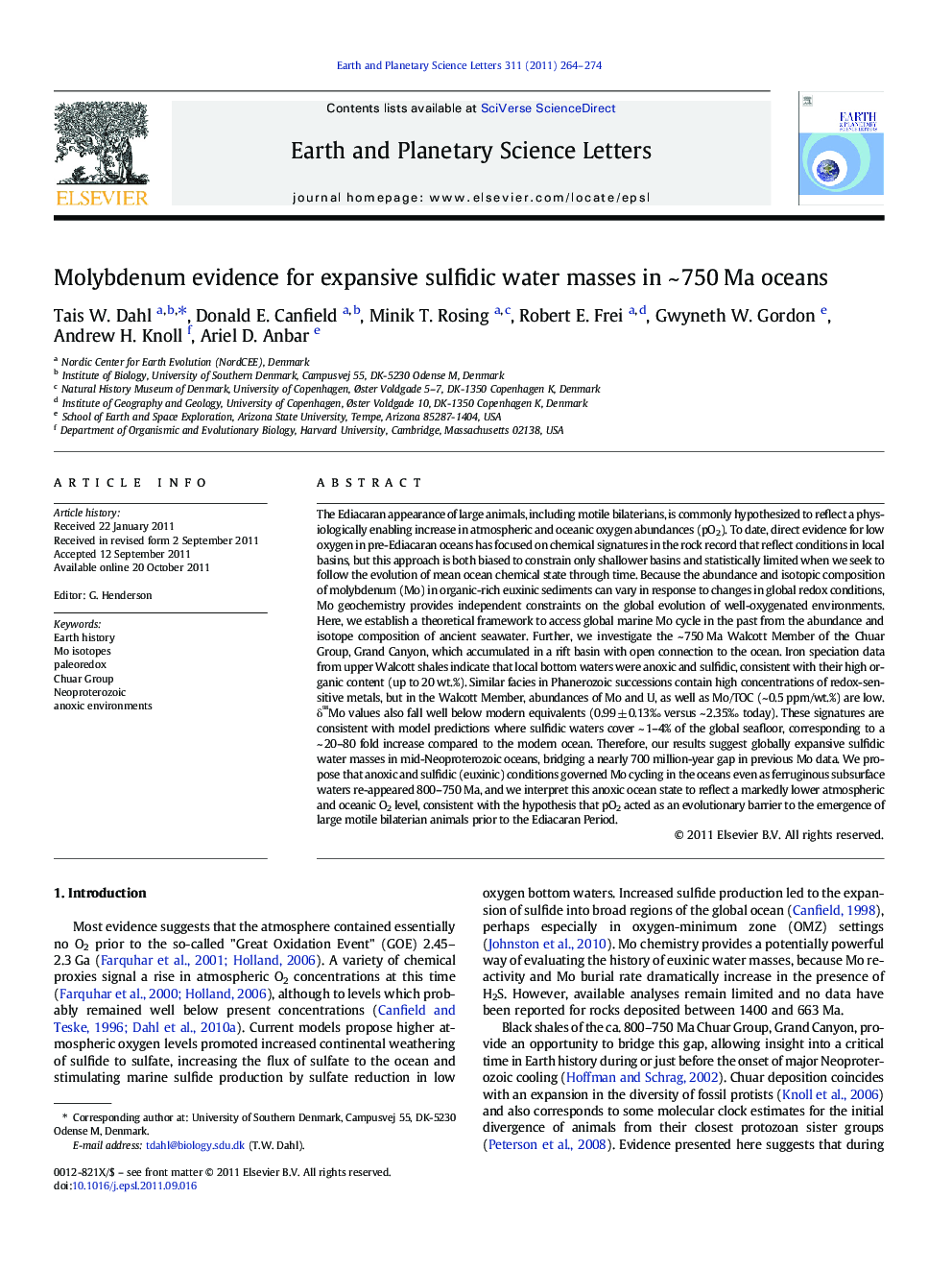| کد مقاله | کد نشریه | سال انتشار | مقاله انگلیسی | نسخه تمام متن |
|---|---|---|---|---|
| 4677806 | 1634817 | 2011 | 11 صفحه PDF | دانلود رایگان |

The Ediacaran appearance of large animals, including motile bilaterians, is commonly hypothesized to reflect a physiologically enabling increase in atmospheric and oceanic oxygen abundances (pO2). To date, direct evidence for low oxygen in pre-Ediacaran oceans has focused on chemical signatures in the rock record that reflect conditions in local basins, but this approach is both biased to constrain only shallower basins and statistically limited when we seek to follow the evolution of mean ocean chemical state through time. Because the abundance and isotopic composition of molybdenum (Mo) in organic-rich euxinic sediments can vary in response to changes in global redox conditions, Mo geochemistry provides independent constraints on the global evolution of well-oxygenated environments. Here, we establish a theoretical framework to access global marine Mo cycle in the past from the abundance and isotope composition of ancient seawater. Further, we investigate the ~ 750 Ma Walcott Member of the Chuar Group, Grand Canyon, which accumulated in a rift basin with open connection to the ocean. Iron speciation data from upper Walcott shales indicate that local bottom waters were anoxic and sulfidic, consistent with their high organic content (up to 20 wt.%). Similar facies in Phanerozoic successions contain high concentrations of redox-sensitive metals, but in the Walcott Member, abundances of Mo and U, as well as Mo/TOC (~ 0.5 ppm/wt.%) are low. δ98Mo values also fall well below modern equivalents (0.99 ± 0.13‰ versus ~ 2.35‰ today). These signatures are consistent with model predictions where sulfidic waters cover ~ 1–4% of the global seafloor, corresponding to a ~ 20–80 fold increase compared to the modern ocean. Therefore, our results suggest globally expansive sulfidic water masses in mid-Neoproterozoic oceans, bridging a nearly 700 million-year gap in previous Mo data. We propose that anoxic and sulfidic (euxinic) conditions governed Mo cycling in the oceans even as ferruginous subsurface waters re-appeared 800–750 Ma, and we interpret this anoxic ocean state to reflect a markedly lower atmospheric and oceanic O2 level, consistent with the hypothesis that pO2 acted as an evolutionary barrier to the emergence of large motile bilaterian animals prior to the Ediacaran Period.
► Oxygenation of Earth's oceans 750 Myrs ago is explored using Mo-based proxies.
► Euxinic sediments from Chuar group record a signal of global ocean conditions.
► Our data shows the oceanic molybdenum cycle was in a sulfidic (euxinic) state.
► Models predict Proterozoic sulfidic oxygen-minimum zones on the continental shelves.
► Low atmospheric pO2 may explain why animals first evolved later in Earth history.
Journal: Earth and Planetary Science Letters - Volume 311, Issues 3–4, 15 November 2011, Pages 264–274